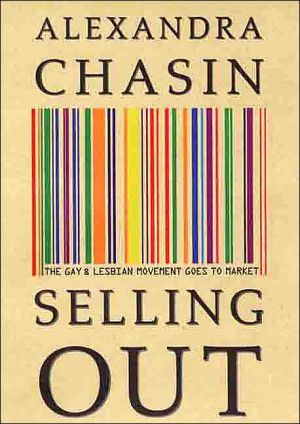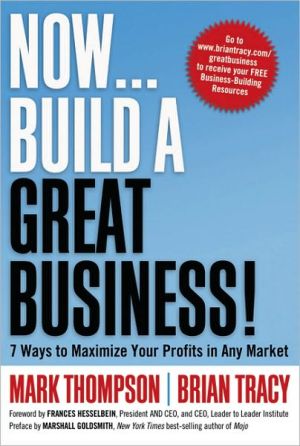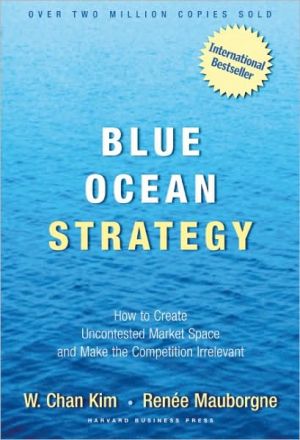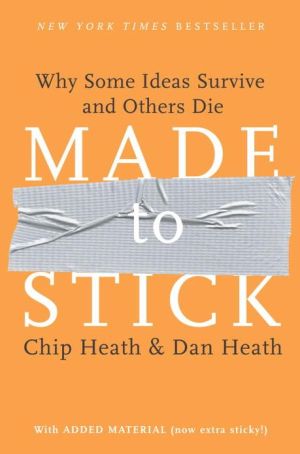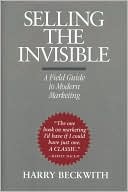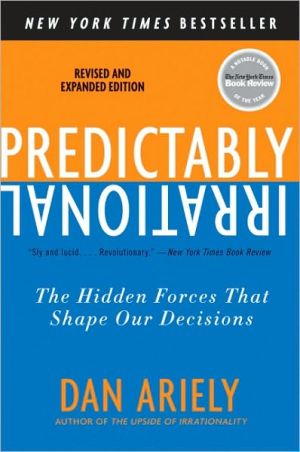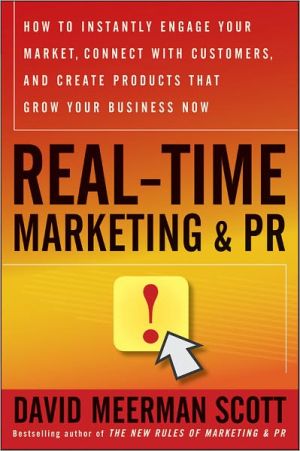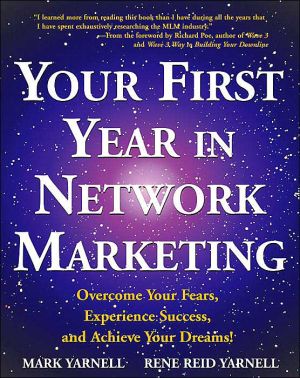Selling out: The Gay and Lesbian Movement Goes to Market
In the 1990s, a new niche market emerged in the United States: gay and lesbian consumers were targeted by both mainstream and gay and lesbian producers. Selling Out asks: What is the relationship between this niche market and the social movement that works for gay and lesbian rights? Locating the niche market and social movement in the context of the rise of consumer culture and pictorial advertising and the rise of identity-based social movements over the course of the 20th century,...
Search in google:
A provocative expose of the mainstreaming of the gay and lesbian consumer Out Magazine This book is an overdue argument for why a booming gay market is not necessarily a sign of progress.
\ \ Chapter One\ \ \ Caveat Emptor,\ or Buyer Beware!\ \ \ Even though the history of the gay and lesbian emancipation movement has been a fight for equal protection, the fair application of laws, public visibility, and the general public's acceptance of their moral legitimacy, as a group gay people are developing more than a political identity. They are in fact manifesting an economic and commercial identity as well as a cultural, philanthropic, and spiritual one.\ —Grant Lukenbill, Untold Millions\ \ \ The Gay and Lesbian\ Niche Market of the 1990s\ \ \ The 1990s was a banner decade for gay men and lesbians. Representation of gay men and lesbians on television, in newspapers and magazines, in courts and in legislatures, in the workplace, and in pride marches and other public forums, increased dramatically. In mainstream media, as well as in gay and lesbian media, gay men and lesbians appeared in greater numbers of public images, and in more elaborate images. Of all the representations circulating in the 1990s, perhaps none was more striking than the image of gay men and lesbians as the latest, the ultimate, the yet-untapped niche market. Descriptions of this market and its "explosion" proliferated; they were descriptions of an imagined body of consumers with gay and lesbian dollars ready to be spent in the pursuit of gay and lesbian lifestyles. As a Strubco ad proclaimed, "The Gay & Lesbian Market Is Exploding!" (See Figure 1.1.) What kind of pictures did those descriptions paint of the gayor lesbian consumer, of the gay and lesbian community, of money itself? Who offered those descriptions, in what venues, and for what purposes? What were the unintended effects of describing "A Market That's Educated, Affluent, and Homosexual"? Rather than providing another set of claims about this supposed niche market—rather than assessing the consuming habits of, the spending power of, or the quantity of dollars circulating among, gay men and lesbians—I will offer a qualitative analysis of the descriptions themselves, and of the effects of their circulation.\ In the 1990s, economists, consultants, journalists, and advertisers began to debate at full throttle whether there really was a gay and lesbian niche. Prior to the 1990s, a small trickle of articles touting a gay market had appeared in the mainstream press, and they did indeed prefigure some of the major themes that would recur in the torrent of coverage in the nineties. Perhaps the earliest of these appeared in the New York Times in 1976, in a story about the efforts of the gay press to attract mainstream advertisers. Gay publisher Donald Embinder was quoted explaining that homophobia on the part of most advertisers inhibited investment in the gay and lesbian community, but simultaneously claiming that such advertisers could nonetheless be persuaded of the profit to be made in that community. A nearly lone voice in the wilderness at that point, Embinder inaugurated a claim that would become quite common in the 1990s; he said that bringing mainstream advertising dollars into the gay and lesbian economy would promote "the business of liberation."\ Another early story heralding a gay and lesbian market was printed in the L.A. Times in 1977; "S.F. Gays Carry Heavy Clout in Politics, Finance" claimed, "Unencumbered with the costs of raising families, homosexuals acquire property on a mass scale." This early claim matches the later designation of gay couples as "DINKS"—consumers with Double Income and No Kids. The article also described gays as active consumers, quoting the editor of the gay newspaper Bay Area Reporter as saying that "`Gays and Orientals are buying up everything that isn't nailed down.'" Implicit in these articles is the assumption that people shop on the basis of their identities, or on the basis of their inclusion in an identifiable social group. Also implicit here is an equation between ethnic or racial identity on the one hand, and sexual orientation on the other, the two groups equally implicated in the tendency toward identity-based consumption. Finally, this article also displays the irrationality that characterizes a good deal of the discussion. Such irrationality took many forms in the 1990s; in this 1977 article, John Schmidt, a wealthy insurance broker and head of a gay businessmen's association, averred a groundless "`belief that gay businessmen are more successful than straights.'" Note, too, that "gays" here refers to gay men, signaling the spectral place of lesbians, or women, in almost every discussion of a "gay" market.\ Also in 1977, a gay market was invoked in San Francisco's Bay Area Reporter. An editorial by Paul Lorch announced that "Gays are literate, affluent, and `au courant."' Calling gays the "last untapped minority market," Lorch asserted that consumers in this niche market "spend what they have or earn on the NOW," rather than saving for the future as their straight counterparts presumably did. Using language and assumptions that would pervade the discussion of the gay market in the 1990s, Lorch also wrote, "Increasingly, Gay dollars are the target of anybody with anything to huckster. In conjunction with the ready cash of the Gay market is the loyalty of the Gay consumer to the Gay businessman." Indeed, gay entrepreneurs, followed by more mainstream producers, did go on to identify and target a gay market in the 1990s, often on the assumption (or advice of gay marketing consultants) that, relative to straight consumers, gay consumers were unusually loyal both to gay concerns and to brand names. However, while such claims abounded in the 1990s, there has never been any statistical evidence for special loyalty on the part of gay and lesbian consumers.\ Another example of pre-1990s discussion of the incipient niche market, Newsweek's 1979 article "Where the Boys Are" describes gay resorts on the east and west coasts. In this article, which expressly names men as its subject, women do indeed make an appearance. Citing real estate values as a function of the development of such largely male-dominated resorts as Provincetown, Key West, Russian River, and The Pines, the article does, however, quote the owner of a women's bar. Pam Genevrino, then-owner of Provincetown's Pied Piper, states that "Gays and straights are all here for the same reasons: to make a buck, improve our community, and enjoy life." In so saying, Genevrino articulates the most common assumption running through all commentary on the gay niche market: patronage of gay-owned businesses, circulation of gay dollars, profit by gay entrepreneurs is tantamount to improvement in the quality of life for gay men and lesbians. In other words, the consumption of gay goods and services has the same effect that the social movement is trying to achieve through political means. Few people ever asked what it means to think of dollars, commodities, or services as having an identity; few ever questioned the assumption that identity-based subeconomies benefit all members of the identity group in question. Only in the 1990s did a critical opposition arise questioning the effects of using economic means to achieve political goals.\ This small spate of news about the gay and lesbian market that came out in print in the late 1970s was short lived. The 1980s brought, along with the Reagan-Bush administrations and AIDS, a nearly total silence on the topic. Following an article in the New York Times Magazine entitled "Tapping the Homosexual Market" in 1982, there was little, if any, mainstream coverage of a gay market; even in the gay media there was relatively little written on it. In 1987, American Demographics (a mainstream advertising trade magazine) ventured into territory it would go on to feature prominently in the 1990s. In the first small attempt to push open a door shut by homophobia and sealed by AIDS-phobia, the magazine reported that "AIDS patients are a tiny fraction of America's gay population. Most gays are healthy, and many are affluent." These "facts" were evidenced, according to the magazine's "Business Reports," by the experience of Neil Feinstein, who had been, to great success, operating nightclubs in Denver, Tampa, New York City, and Washington, D.C. Clearly AIDS and the conservative administrations that refused to discuss it openly had had a dampening effect on the discussion of a gay market, so that there was a gap of several years between the late 1970s and the late 1980s in that discussion. In 1989, American Demographics would once again refer to a gay niche market, noting about the gay neighborhood in Houston, Texas, that "Marketers have not yet found Montrose." But they would soon find Montrose and every other enclave of the newly targetable gay market. Within three years, Marketing News would proclaim that "Mainstream Marketers Decide the Time Is Right to Target Gays."\ Between 1991 and 1993, American Demographics was joined by the Wall Street Journal, the New York Times, Advertising Age, and other mainstream publications in featuring news of a gay niche market. In 1993, Advertising Age could issue a "Special Report: Marketing to Gays and Lesbians" and in 1995, American Demographics could announce that the gay niche market was "Out of the Closet." In 1994, The Center for Lesbian and Gay Studies at the City University of New York sponsored a conference called "Homo Economics" on "Market and Community in Lesbian and Gay Life." By 1995 Grant Lukenbill had published his book-length plea to mainstream marketers: Untold Millions: Positioning Your Business for the Gay and Lesbian Consumer Revolution. In 1996, the Journal of Homosexuality published a special issue, later released as a book called Gays, Lesbians, and Consumer Behavior: Theory, Practice, and Research Issues in Marketing. Lesbian and gay business expos began cropping up in cities around the country; the first annual expo in New York City was produced in 1994. These expos were intended to publicize both gay and lesbian businesses and mainstream producers who targeted the gay market. They often had disappointing public attendance, but they were a clear indicator of the belief in the existence and growth potential of a gay and lesbian market. A number of newsletters put out by gay and lesbian professional associations echoed the hype, such as the headline of the online newsletter of the Gay and Lesbian Travel Industry that heralded the "Market of the Decade." Professional gay associations such as the National Lesbian and Gay Journalists Association, and business associations such as the Greater Boston Business Council proliferated, while gay and lesbian employee groups organized in workplaces? Thus, throughout the 1990s, there was an explosion of discourse about the gay market published in the mainstream news media, the gay media, the advertising trade press, and scholarly journals.\ One gay market research firm, QuotientResearch, began publishing a monthly "Newsletter of Marketing to Gay Men & Lesbians" in December 1994 (see Figure 1.2). Quotient reported regularly on "Sponsorship Opportunities," on ad agencies "serving" gay audiences, on new advertisers in national gay magazines and gay media more generally, and on lesbian and gay business expos and conferences, and it featured such special stories as the macho "So, Just How Big Is the Gay Market, Really?" Also established in 1994 was "America's gay business letter," Victory! A bimonthly newsletter dedicated to acknowledging "the success of gay and lesbian business entrepreneurs throughout the world, as a means to motivate and inspire tomorrow's business leaders," Victory's regular columns included an index of gay-friendly stocks, advice on "Power Investing," and Per Larson's "Empowerment," which offered counsel on financial strategies? These two publications take for granted a bullish gay market, but more than that, they associate "gay money" with political power for gay men and lesbians. These publications—along with Clout! Business Report—were not long-lived, but their existence speaks, once again, to a phenomenal burst of activity and discourse centered around the idea of a gay and lesbian market in the 1990s?\ This discourse exploded as a result of many factors, but perhaps the most significant was the market research conducted and distributed by a handful of gay marketing firms. Of these, Simmons Market Research Bureau and a small firm called Overlooked Opinions probably had the most widespread, as well as the most notoriously destructive, effects. Simmons' earlier surveys had less dramatic impact; then, in 1991, Overlooked Opinions announced that gay men had an average annual income of $42,889, while lesbians earned, on the average, $36,072. These figures exceed average income figures for men and women in general, largely because they are based on a nonrandom sample; Overlooked Opinions' sample comes from periodical readers, as well as lists compiled at events and bookstores. In the mid-1990s, Overlooked Opinions reported that gay household annual incomes averaged $55,000 a year. Again, these numbers are inflated relative to the general population. They further claimed that gay men and lesbians earned $514 billion annually. As exposed in an important analytical piece in Dollars and Sense, these figures portray gay economic status very inaccurately, based as they are on a disproportionately white, affluent, male, and educated sample. The exposé helped discredit Overlooked Opinions' survey, but not before the figure had been seized on by rght-wing groups opposing antidiscrimination legislation—like proponents of Colorado's Amendment 2—arguing that such an affluent social group didn't need "special protections." While some commentators on the gay market have subsequently dissociated themselves from this "research, many gay media entrepreneurs exploited Overlooked Opinions' figures in their appeals for corporate advertising.\ Another firm, Rivendell, also produced a great deal of market research with the purpose of winning advertising for gay papers, but it was a bit more careful to confine itself to claims about the readership of gay male publications rather than the whole gay community. Nevertheless, their ads can seem to represent all gay people as male, highly educated, and affluent, with consumption patterns that include unusually frequent travel, liquor and music purchases, and the like (see Figure 1.3). By contrast, a 1994 study produced by the Yankelovich firm produced figures for annual income that were significantly lower than Overlooked Opinions' figures, reflecting an average annual income for gay men of $21,500 ($1,000 less than men in the overall population) and $13,000 for lesbians (negligibly greater than women in the overall population). Slowly, some marketers became more careful to qualify their claims about the gay market, relying more and more on the Yankelovich data, except when referring narrowly to readers of gay magazines, and then usually attaching asterisks or fine print that acknowledged Overlooked Opinions as the source. Facts were extremely hard to come by in this arena. Hype was not.\ \ \ The Dream Market (see Figure 1.4)\ \ \ The dissemination of bogus statistics about gay and lesbian (but mostly gay male) income and expenditure was swift and far and wide. Even after those statistics had been discredited, they were still quoted. And wherever they appeared, they were linked to claims about personal identity, political status, and the desires of the gay community as a whole. American Demographics printed a typical formulation in 1995: "The gay and lesbian market is an untapped gold mine. Because gays are highly educated and usually have no dependents, they have high levels of disposable income. And because these consumers are disenfranchised from mainstream society, they are open to overtures from marketers." Leaving aside for a moment the demographic inaccuracies, note that disenfranchisement is thought here to make gays particularly vulnerable to target marketing. Exclusion from mainstream culture is cast in political terms, but the solution for it is offered in the market. Characteristically, consumer culture offers redress for the disenfranchisement of those who have traditionally been cast as "other" on the basis of their identities. Arising together with consumer culture early in the twentieth century, "The social perception was one in which people ameliorated the negative condition of social objectification through consumption—material objectification." In other words, marketing asked people to view their own entrance into the marketplace as a corrective for past social alienation. This technique of redress, by definition, works as a program of acculturation and assimilation for consumers of various identities. Specifically, for gay men and lesbians, this would mean that gay identity-based consumption would ameliorate homophobia. With respect to the gay and lesbian niche, "The gay business class.... uses an open rhetoric of liberation and self-expression through commercial strength and consumer power. It offers a version of gay freedom which is based on the visibility and power of gay markets.... The positive, thrusting confidence of gay marketeers appears to make a refreshing change from the familiar reiteration of suffering, persecution and passive victimhood." Through target marketing to gay men and lesbians, then, producers and advertisers could theoretically serve a dual purpose: generating sales and soothing the wounds of homophobia. Ultimately, however, even if gay men and lesbians were welcomed into the larger polity through consumption, the change would be a superficial one, for it would leave intact the channels of profit. Thus at least one feature of early consumer culture persisted in the 1990s: "The mass-produced goods of the marketplace were conceived of as providing an ideology of `change' neutralized to the extent that it would be unable to effect significant alteration in the relationship between individuals and the corporate structure."\ Meanwhile, descriptions of the gay and lesbian market as a "gold mine" took up, and further spread, misrepresentations of the demographics of the gay and lesbian population. In 1992, American Demographics quoted the results of the Overlooked Opinions survey as fact: "Businesses have overlooked the fact that gay people often have more discretionary income.... They also travel more often simply because they have no children. Twenty percent of gay men go to a fitness club at least ten times a month, and 17 percent of gay women read a book every day." No statistical analysis is necessary to recognize inaccuracy here: many gay men and lesbians do have children. And even among a sample of disproportionately better educated "gay women," it is very difficult to believe that 17 percent read at the rate of a book a day. The $514 billion figure was also bandied about at least as late as 1997. If the results of the Overlooked Opinions survey supposedly revealed, however dubiously, that all gay men and lesbians combined earned that amount of money annually, an ad for the magazine Victory! mobilized the same figure in a different way: "In 1992 our community pumped $514 billion into the nation's economy." "Pumped in" is not a very specific phrase, but it is more likely to be interpreted as a statement about expenditure than as one of earnings. "Knowledge is power," claimed Victory! in the same ad, but of course, misinformation is of particular value. My point is that even though representations of the economic position of gay men and lesbians were shaped by political and market interests, rather than by the reality of that position, those representations could not avoid carrying ideological messages.\ \ \ It's Not About Politics, It's About Money\ \ \ A recurring claim in rhetorical constructions of a gay market attempted to eliminate the taint of politics from that market. Especially, but not exclusively, advertisers and marketers stressed the profit motive in their appeals to mainstream corporations and denied any connection between business practices and political tactics. For example, a senior vice president of marketing and communications for CBS in New York, George F. Schweitzer, asserted that "Buying ad space is not a political statement ... it's an advertising strategy." Likewise, gay marketer David Mulryan made a plug for the gay market by telling Marketing News, "Take away the politics and it's good sound marketing." At its most basic, the claim that business and politics are distinct entities reflects a belief that the market is amoral. More particularly, it can reflect the hope that corporations would not let the image of militant oppositional gay and lesbian politics deflect dollars from gay entrepreneurial enterprises like list selling, marketing, and publishing.\ A less cynical interpretation held that the visibility of gay men and lesbians in mainstream advertising, on the one hand, and mainstream ads in gay and lesbian media, on the other, signals or generates tolerance by, and inclusion in, mainstream culture. But that is an equation with a political basis, and thus is incompatible with a distinction between politics and business. It was not uncommon to find contradictory claims: the gay and lesbian niche market is not a matter of politics, and it's a matter of good politics, as in Grant Lukenbill's statement of the case. On the same page he writes, "American business does not have to become a forum where gay and lesbian political battles are fought," and "They will recognize that their profits are no longer immune from the issues surrounding gay and lesbian freedoms—both in the courtrooms and the marketplace." Lukenbill's contradiction is apparently reconciled in his bottom line: "The business leaders who are taking a stand and establishing or reaffirming their commitment to gay and lesbian emancipation are taking a stand for their own economic prosperity as well." With his equation between profit and progressive political outcome, Lukenbill echoes the many voices that celebrate the possibilities for cooperation between the gay and lesbian niche market and the gay and lesbian movement.\ \ \ It's About Money and Politics\ \ \ Plenty of people argued that gay and lesbian commerce was political. From this perspective, if the historical economic disregard for gay men and lesbians was governed by homophobia, then the new acknowledgment of a gay market demonstrated a new attitude, and the Wall Street Journal was right when it announced that "Overcoming a Deep-Rooted Reluctance, More Firms Advertise to Gay Community." Again, opportunities for identity-based consumption for gay men and lesbians seemed, to many, to signal an invitation into mainstream culture, the turning of the tides of homophobia to enfranchisement. This interpretation of target marketing to gays allows that the market has moral agency. It also allows for the argument that homophobia is bad for business. Thus, profitable and ethical business practices would equally suggest targeting the gay market. As gay nightclub owner Neil Feinstein put it, "Prejudice hurts, but it also decreases competition."\ Furthering this logic, financially and morally sound business practices would themselves constitute political action. Targeting the gay market would advance the cause of political enfranchisement, as in the preamble to Gay Biz's "Pride Directory Online": "The businesses you see listed in these pages have done more than step forward for our rights, they have paid to be a part of this professionally run directory and solicit your business. The more successful these like-minded business people are, the more rapidly our right to choose same-sex partners will be secured." There is no explanation of how the businesses have, in the past, stepped forward for gay and lesbian rights; there is, indeed, no logical connection between their stepping forward and their presence in the directory. The only logical connection is between paying to be part of the directory and showing up in the directory. Why is making that payment doing "more than" fighting for rights and how have the listed businesses done the latter? We don't know. The implication, not logically derivable here, is that by the very act of paying to be included in the directory, the businesses listed have advanced the political struggle for gay and lesbian rights. The directory promises that any business that has paid to be listed is "like-minded" with the reader of the directory, a promise that makes unwarranted assumptions about the businesses (presumably on the basis of their payment) and about the reader as well. Finally, the directory indicates that the future success of these businesses will forward the political cause for rights. Rights, like the right to list in this directory and the right to "choose" partners, are figured here as the automatic result of identity-based production and consumption. Business practice and political action are one; there is no mention of—perhaps no need of—political action outside of the commercial sphere.\ By the same token, in discussions of the gay market (in the gay and straight media) in the 1990s, political activism had two ends: securing rights and generating consumer demand. The year 1993 was a key year for gay marketers, and for the conflation of political and economic tactics, not least because of the March on Washington. In an article entitled "Businesses Offering Products for Gays Are Thriving: Rise in Activism and Public Acceptance of Lifestyles Increases Demand," the Wall Street Journal reported that "With the gay rights march in Washington this weekend, the market is brisker than ever right now." Cindy Cesnalis of the catalogue company Shocking Gray commented on the popularity of gay pride flags and pink-triangle and lambda jewelry, saying that "devices that stamp `Queer $' on currency, and imitation military pins with gay-rights insignia are all on the rise ... we're constantly re-ordering pride flags." In buying merchandise designed to display "gay American" identity, in patronizing gay-owned businesses, in exercising options in the market, consumers joined forces with political activists.\ In terms of realizing one's social or political vision, socially responsible shopping is sometimes effective and almost always more successful than shopping without one's values in mind. I am not saying it is wrong or retrogressive to take consumption seriously as a tool for registering preferences in a field of limited choice. I am saying that I think it is worth speculating on the effects of reducing politics to symbolic and economic phenomena. One scholar theorizes that "Representative groups of homosexuals and lesbians ... may publicly organize to attain further housing, insurance, medical, parenting, marital rights, etc., but they do so whilst the gay community's majority spends significant proportions of their income in pursuit of distinguishable gay and lesbian lifestyles in segregated specifically gay social and sexual territories." In other words, private identity-based consumption might to some extent come to seem like an adequate substitute for public activism, among consumers who otherwise support progressive social change.\ \ \ It Is About Politics—Bad Politics\ \ \ As should be clear by now, most of the media reports of gay wealth in the 1990s, like the claims for the viability of a gay niche market, were celebratory. They celebrated the idea that gay entrepreneurs and mainstream corporations alike could make money while making the gay community as a whole more politically powerful. What's not to celebrate? The fact is that while a very few gay people might make money from this market, there is no reason to think that their financial profit amounts to either economic or political betterment for the whole identity group. Indeed, the optimistic claims and reports were not just misleading or inaccurate, they were also embedded in the logic of identity politics; they assumed or insisted that all gay people share political purposes. In a small independent 'zine, an alternative voice decried the commodification of queer things and queer people represented by the merchandise displayed by Rainbow Pride. The writer in Rude Girl emphasized both the falsity of, and the investment in, the appearance of unity.\ \ \ Not surprisingly, Rainbow Pride abounds in the new and wretched incarnations. A Pride jacket, pride soap (with optional "Lufa" sponge), pride T-shirts, flags, shorts, windsocks, headbands, hats, camera straps, towels, bathrobes ($139.95! Hubris!), suncatchers, necklaces, and a lamp which prizmatically projects a rainbow onto the wall. If the gay community ever held hopes of any real unifying symbolism or reverence with this Rainbow Flag, I believe they have blown it.\ \ \ As the exclamation points above suggest, the cost of enfranchisement, the property requirement, prices some consumers out of citizenship. In this manner, gay-identity marketers, in their assumption of group unity on the basis of sexuality, cover over class differences in the gay and lesbian community. From the oppositional point of view expressed in Rude Girl, the political aims symbolized by the Rainbow Flag are undermined by class difference and/or the indifference of marketers to those aims. On the one hand, a gay community with symbols of its own status as a nation (flags, military pins with gay rights insignia, currency) presents the appearance of unity. On the other hand, that appearance is conveyed in commodity form, so that its ownership is not equally available to poorer gay men and lesbians. As Rude Girl points out, enfranchisement in the United States: "for the queer shopper with even more disposable income at his disposal they [Rainbow Pride] offer what must truly be the centerpiece of the catalogue and indeed the centerpiece of the entire Gay Civil Rights movement: A Limited Edition Franklin Mint Stonewall Commemorative Plate!" This "centerpiece" is a Franklin Mint plate commemorating the symbolic birth of the gay rights movement. This item collapses gay and American identity into an object that stands for money, and it seems to imply a unity of gays and Americans. The unity implicit here, then, not only covers internal differences within either grouping, it also stands for pure assimilation: gay identity is American identity. In this way, the plate, itself a commodity that refers to money, offers full citizenship, or enfranchisement, to the consumer.\ (Continues...)
AcknowledgmentsixList of IllustrationsxiiiPrefacexvIntroduction11Caveat Emptor, or Buyer Beware!292The Gay and Lesbian Press and the "Business of Liberation"573Advertising and the Promise of Consumption1014Boycotts Will Be Boycotts1455Strings Attached: How Money Moves the Movement1836Steal This Show: Away from Identity and Toward Economic Justice221AppendixThe Boycott Literature247Notes255Bibliography313Index337
\ ChoiceChasin's book is a thoroughly researched, cogently argued contribution to the ongoing discourse in the lesbian and gay community.\ \ \ \ \ Out MagazineThis book is an overdue argument for why a booming gay market is not necessarily a sign of progress.\ \ \ Publishers WeeklyA passionate analysis of gay politics...\ \ \ \ \ Publishers WeeklyIs it possible to have a meaningful revolution in the middle of a capitalist spending frenzy? This, Chasin contends, is the central question facing the gay rights movement. In a passionate, if ultimately utopian, analysis of gay politics, Chasin asserts that the creation of a gay-oriented consumer market--in tandem with the mainstreaming of a gay politic that disavows broad-based coalitions with women and people of color--has prevented homosexuals from pursuing a more radical vision of social change. Although the movement has brought same-sex marriage and gays in the military into public debate, it has not promoted a comprehensive vision that would "provide all people with access to the full range of social institutions, over and above the equal right to them." Chasin, who has taught at Yale University, is terrific on the specifics: she notes the way recent gay-targeted ads evoke images of assimilation and national identity by using the U.S. flag or the Statue of Liberty, and she points out that advertising and magazine copy often create the impression of an all-white, predominately gay male community, while hypersexualizing the few images of racial minorities. Likewise, she deftly assesses how the contemporary marketing of gay culture resonates with the way consumption has historically contributed to ethnic identities. But while her arguments are capable, they often feel overintellectualized and don't always adequately account for the myriad contradictions inherent in struggling for social justice under the constraints of capitalism. Agent: Malaga Baldi. (Apr.) Copyright 2000 Cahners Business Information.\|\ \
